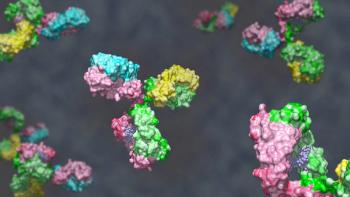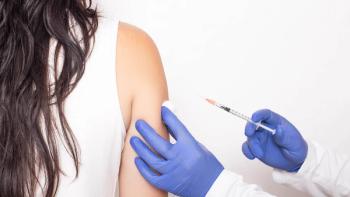
- BioPharm International's BP Elements, January 2022
- Volume 1
- Issue 1
Elements that are Key for Successful Assay Transfer
The COVID-19 pandemic generated partnerships among organizations with the goal of changing the way in which assay development and tech transfer of these assays are conducted moving forward.
The release of the SARS-CoV-2 virus genetic sequence in January 2020 marked the beginning of an intense period of R&D activity in a race to find effective vaccines to halt the devastating consequences of the global pandemic. The benefits of that unrivalled focus have been made clear. The time from the genetic sequence’s release to the submission of the first vaccine Phase III clinical trial data for regulatory review (from Pfizer–BioNTech) was just 314 days—an unparalleled acceleration of typical timelines that could be more than 10 years for the development of a vaccine in normal circumstances (1).
However, the sheer volume of developers working in the space across a range of modalities (including recombinant viral vectors, live attenuated vaccines, recombinant proteins, and nucleic acids), using different methods of data collection and evaluation, made comparison of immune responses to find the most effective candidates extremely challenging. The unique circumstances called for a shift in vaccine R&D, to an approach focused on collaboration and harmonization. One group at the heart of this shift has been the Coalition for Epidemic Preparedness Innovations (CEPI) centralized laboratory network. The network’s reference labs have effectively transferred a number of assays to laboratories across the globe for a coordinated assessment of SARS-CoV-2 vaccine candidates, allowing for the most efficient global response to the pandemic.
The CEPI centralized laboratory network
As the SARS-CoV-2 virus began to spread, the Bill and Melinda Gates Foundation (BMGF) and CEPI, a global coalition of public, private, philanthropic, and civil society organizations aimed at accelerating the development of vaccines against emerging infectious diseases, set out to bring much needed alignment and efficiency to the global response, and to ensure the most effective vaccines would reach the most people in the shortest amount of time.
The CEPI centralized laboratory network was established in October 2020 to allow for centralized analysis of samples from vaccine candidate trials to mitigate the risk of variations from independent analyses and to enable head-to-head comparisons of immune responses induced by multiple vaccine candidates (2). The CEPI network is made up of nine laboratories worldwide: Nexelis in Canada; UK Health Security Agency (UKHSA, formerly Public Health England) and National Institute for Biological Standards and Control (NIBSC) in the United Kingdom; VisMederi Srl in Italy; Viroclinics-DDL in The Netherlands, icddr,b (formerly International Centre for Diarrhoeal Disease Research) in Bangladesh; Translational Health Sciences and Technological Institute (THSTI) in India; Q2 Solutions in the United States; and the Universidad Nacional Autónoma de México (UNAM) in Mexico City. The laboratories were selected based on their capacity to perform the necessary studies, but also for their ability to work internationally to harmonize protocols and data.
Developing assays for effective analysis at scale
In February 2020, before the official declaration of the global COVID-19 pandemic, teams at Nexelis and UKHSA began proactive work to develop the immunological tools and reagents that would be required to produce the necessary assays for evaluating the efficacy of the SARS-CoV-2 vaccine candidates on the horizon. Six of these assays across humoral and cellular response, developed and characterized in-house at Nexelis and UKHSA, were selected by the CEPI network to support global SARS-CoV-2 vaccine development programs. Furthermore, these assays have also been used to evaluate the impact of SARS-CoV-2 variants on different vaccines.
To assess the humoral response, experts at Nexelis developed, with complete characterization, the critical reagents to protein targets (pre-fusion full length spike, receptor-binding domain, and nucleocapsid) of SARS-CoV-2 virus for three enzyme-linked immunosorbent assay (ELISA) assays as well as the pseudoparticle neutralization assay (PNA). Meanwhile, the team at UKHSA developed the viral neutralization assay. For assessment of the cellular response for T helper type 1 (Th1) and Th2, Nexelis developed the ELISpot Interferon (IFN)-gamma/Interleukin (IL)-5 assay.
To date, more than 30 assay transfers have been completed between Nexelis and UKHSA to the other recipient labs within the network. As well as ensuring procedures and protocols were in place for the successful transfer within the network, all the assays were also calibrated against the World Health Organization (WHO) international reference standards to ensure harmonization with other labs performing these assays globally.
Within the CEPI centralized network, UKHSA and Nexelis have been identified as the two main reference labs in the overall transfer strategy. Within the first 12 months of the SARS-CoV-2 pandemic, UKHSA and Nexelis managed to develop a toolkit of qualified and validated assays, which played a crucial role in SARS-CoV-2 vaccines and antivirals worldwide to support global public health as well as vaccine companies in their clinical development and regulatory submission process.
High quality reagents
The Nexelis protein science team constructed the SARS-CoV-2 pseudo-virus to allow for the viral particles to be handled in a biosafety level (BSL)-2 laboratory. This allowed the Nexelis and UKHSA teams flexibility to develop, qualify, and validate the wild-type plaque reduction neutralization tests (PRNT), micro-neutralization (MNA), and PNA for SARS-CoV-2.
Before reaching the stage at which an assay is prepared for transfer, the production of high-quality reagents (including pseudoparticle against SARS-CoV-2 and its variants) was the first vital step toward ensuring quality control and consistency of assay performance across the network.
Critical agents such as the SARS-CoV-2 pseudovirus are available to labs within the wider CEPI network further demonstrating the value of the public-private partnerships leveraged to establish a new gold standard for vaccine and antiviral development.
Preserving assay effectiveness throughout transfer
Safeguarding the successful transfer of these assays has been critical to the vision of the CEPI network to improve the harmonization of immune response assessment across SARS-CoV-2 programs.
Shipment is always a challenge for successful assay transfers, and the pandemic has added layers of complexity. The network had to address several potential challenges surrounding everything from import permits and documentation for the different viruses and key components, to the implementation of cold chain logistics and dry shippers to maintain the stability of the key reagents throughout the full transportation process.
A comprehensive transfer protocol
A thorough protocol, made up of four elements, has been the driving force behind the transfer process between the reference labs and the recipients. Firstly, this includes an assay overview to ensure that everyone involved in the analyses is aligned with how each assay is being performed in the reference labs and understands the limitations of the assays. A gap analysis was completed to highlight any differences between the reference labs and the recipients across key components, including everything from experimental conditions to equipment to the software used for analysis, so that Nexelis and UKHSA could put plans in place during the transfer process to mitigate the potential impact of any differences between testing environments.
A critical component of this gap analysis was comparison of the software used by scientists to aid with calculations for titers and concentrations. The compatibility of this software between the reference and recipient labs continues to pose a challenge. To mitigate the risk of impact to the assay due to differences in calculations, Nexelis provided the validated SoftMax Pro protocol used in their own lab to the recipients. This meant all labs would be using a fully validated GxP protocol to aid in further safeguarding alignment across the network.
Finally, a laboratory comparison assessment and an assay performance evaluation at the recipient labs were completed to ensure that the quality of the assays was not impacted by the transfer.
Future proofing current successes
As the vaccine landscape continues to develop, it is imperative that both the quality and the persistence of the assay transfers can be maintained in the long term. To ensure this, the network is performing aligned assay trending using the Levey-Jennings control chart to assess assay performance overtime and deploying a proficiency panel, which will be tested every six months to ensure the assays are not drifting or trending.
Since the arrival of the wild-type SARS-CoV-2 virus in 2019, the COVID-19 global landscape has continued to evolve with the emergence of new variants of concern. The ongoing analysis of the assays is a vital component of the network’s efforts to ensure it can productively support the development of effective therapeutic candidates against emerging variants of concern, variants of interest, and potential future variants.
The key ingredient for a streamlined approach
The final critical component for the assay transfers was ensuring that the scientists at the recipient labs had access to the necessary expertise to perform the assays themselves. Under normal circumstances, analysts from Nexelis would have travelled to recipient labs to help with transfers but due to the pandemic the reference labs have had to be creative in how they provide essential training and troubleshooting in a virtual format. They created videos and ran full walk-through method standard operating procedure sessions to make sure all scientists were clear on the reality of the assays at Nexelis or UKHSA. They also joined ad hoc teleconferences with recipient lab scientists to regularly align or to discuss any issues such as unexpected results.
This open collaboration and flexibility to work across continents has been critical to the success of the network’s transfer program at every stage during the past 18 months. The ability of eight independent laboratories, competitors in the ‘normal’ world, to work together seamlessly in the pursuit of a shared goal has marked the beginning of a new era of global R&D—one which must continue long after the world emerges from the COVID-19 pandemic, for the benefit of patients everywhere.
References
1. CEPI, “CEPI Launches Plan to Tackle Risk of Future Pandemics and Epidemics,” Press Release, March 10, 2021.
2. CEPI, “CEPI Establishes Global Network of Laboratories to Centralize Assessment of COVID-19 Vaccine Candidates,” Press Release, Oct. 2, 2020.
About the Author
Luc Gagnon, PhD, is vice-president of Vaccine Sciences at Nexelis.
Articles in this issue
about 4 years ago
COVID Pandemic Prompts Renewed Interest in Biotech Startupsabout 4 years ago
Bio-Rad Introduces SARS-CoV-2 Variant Neutralization Antibody Assaysabout 4 years ago
Insightful Science Completes Acquisition of Protein Metricsabout 4 years ago
New High Fidelity CRISPR Cas9 Protein Reduces Off-Target Effectsabout 4 years ago
Amgen Extends Collaboration with Syngene InternationalNewsletter
Stay at the forefront of biopharmaceutical innovation—subscribe to BioPharm International for expert insights on drug development, manufacturing, compliance, and more.




